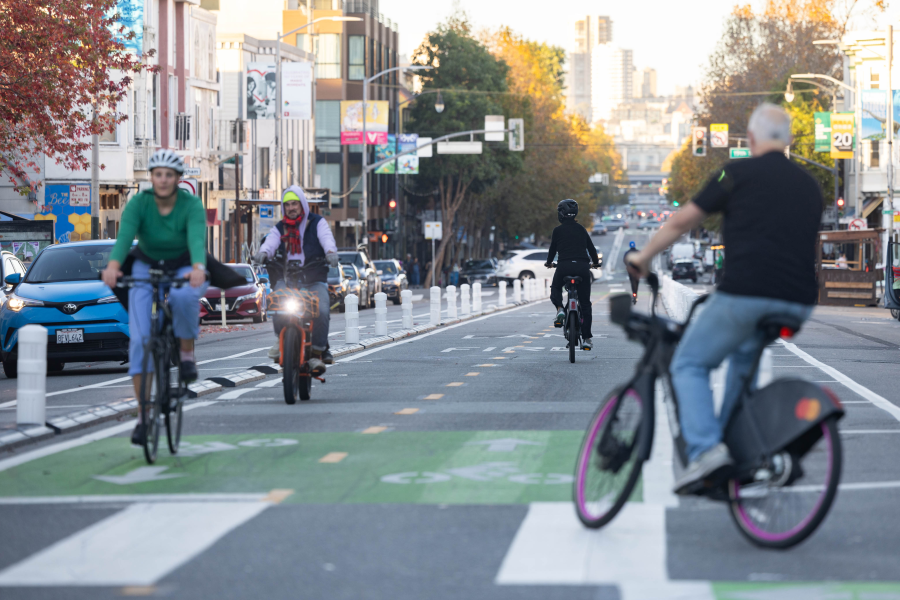The Newsom economic policy is working—for government. It is not working for the people of California. On December 5 he will have a Special Session of the Legislature to increase gas taxes, making it more expensive to live in California—and to assure we have higher unemployment than the national average.
“One month does not equal a trend, but can be a cause for concern. For instance, employers in California added 19,900 nonfarm payroll jobs in August after registering 84,800 new hires in July. Meanwhile, the Golden State’s unemployment rate rose to 4.1% in August from July’s 3.9%, according to the state Employment Development Department.
The national rate is 3.5%. This is the record he wants to run for President on—in a Democrat primary, it is a winner—in a national election it is a disaster.
California’s jobless rate up to 4.1% amid mixed economic signals

BY SETH SANDRONSKY, Caoitol Weekly, 9/30/22
One month does not equal a trend, but can be a cause for concern. For instance, employers in California added 19,900 nonfarm payroll jobs in August after registering 84,800 new hires in July. Meanwhile, the Golden State’s unemployment rate rose to 4.1% in August from July’s 3.9%, according to the state Employment Development Department.
“California’s job market showed considerable resilience in August,” according to economist Lynn Reaser of Point Loma Nazarene University. “There was a solid gain in nonfarm payroll jobs despite a rise in the jobless rate.”
The last time that California’s unemployment rate had a month-over spike was in May of 2020, two months after the coronavirus pandemic hit.
It is worth noting two separate data points in the August employment report.
One is a federal survey of 5,100 California households that is the source of the unemployment rate, which requires that workers are seeking employment. Another data point is a federal survey of 80,000 California businesses, which is the source of the figures on nonfarm payroll jobs.
The last time that California’s unemployment rate had a month-over spike was in May of 2020, two months after the coronavirus pandemic hit.
The Golden State has clawed back 98.3%, or 2,711,600 of the 2,758,900 nonfarm job layoffs, from the March and April of 2020 shelter-in-place order from Gov. Gavin Newsom to slow transmission of the COVID-19 pandemic, according to the state EDD.
Against the backdrop of recent employment data in California, the U.S. unemployment rate rose to 3.7% in August compared with July’s 3.5%, according to the federal Bureau of Labor Statistics. U.S. employers added 315,000 nonfarm payroll jobs in August versus 528,000 new hires in July.
At the same time, the ongoing drought is harming California farm employment. Farm employer payrolls decreased 3,800 jobs in August from July.
In August, seven of the Golden State’s 11 industry sectors added nonfarm payroll jobs, compared with 10 job-gaining sectors in July. Leisure and hospitality employers led the way in August with 9,800 new hires. Most of these job gains were in accommodation (hotels and motels) occupations. California’s leisure and hospitality employment crashed during the Covid-19 lockdown, as tourism ground to a near-halt.
California’s trade, transportation and utilities employers added 6,000 new hires in August. Most of these employment gains occurred in the retail subsector, notably in car and parts dealers, food and beverage stores, and health and personal care stores, according to the state EDD. The largest month-over employment loss took place in the information sector, down 3,800 jobs, in August. These job losses occurred across film and video industries, along with data processing and hosting services.
At the same time, the ongoing drought is harming California farm employment. Farm employer payrolls decreased 3,800 jobs in August from July.
Avocado and wild rice farmers, for example, are seeing diminished harvests, according to the California Farm Bureau Federation. Water cutbacks to farmers are a driving force in this trend.
“Going forward, the state is likely to feel a greater negative impact as the Fed’s tightening eventually takes hold.” — Lynn Reaser
California’s unemployment rate across its 58 counties reflected a coastal and inland divide. A case in point is a state-leading low unemployment rate of 2.1% in San Mateo County south of San Francisco versus a high of 16.2% in Imperial County east of San Diego. This employment division is a long-running trend in the Golden State.
Meanwhile as summer fades and fall nears, California is facing economic headwinds.
In August, month two of the current fiscal year, the Golden State had a 7.6% decrease in the collection of personal income tax. That is not all. “The month also saw lower proceeds from sales and corporation taxes,” 4.5% and 19%, respectively, according to a bulletin from the California Department of Finance.
The dip of these three sources of state tax revenue, if it continues, could mean less state income for an array of public services, including government employment.
Another headwind for California involves monetary policy at the federal level.
“Going forward,” said economist Reaser, “the state is likely to feel a greater negative impact as the Fed’s tightening eventually takes hold.”
he Fed, the nation’s central bank, is tightening, or raising, interest rates in a bid to slow inflation, a general rise in prices, as food and fuel costs slam working families in and out of California. However, increasing the cost to borrow money also slows economic activity, from hiring to home buying. Apparently, such outcomes are an acceptable risk to the Fed.



